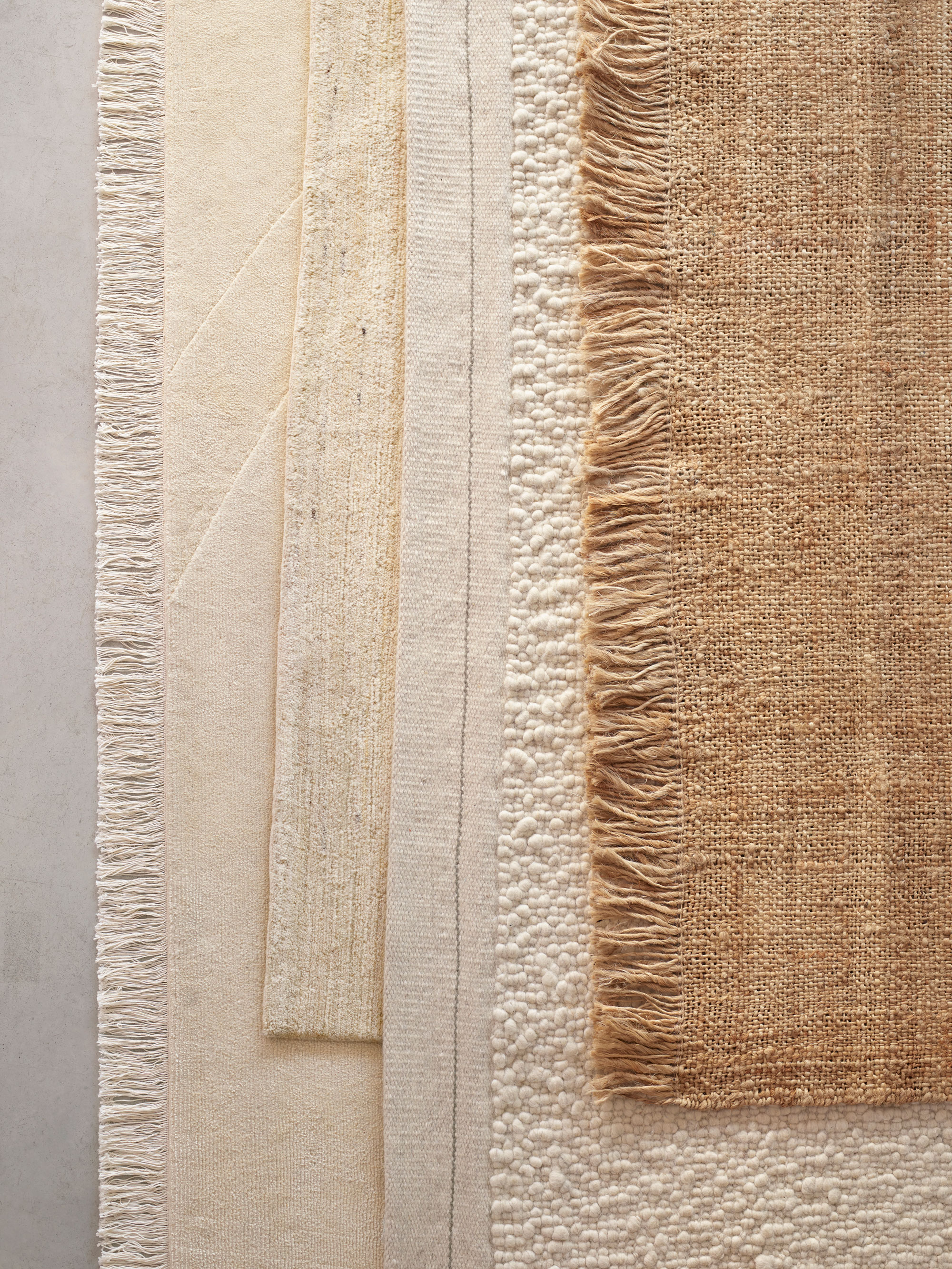Cradle to Cradle explained – how to design the greenest home possible, according to an interior designer
Cradle to cradle principles are the next step in eco-friendly sourcing. Louisa Grey, founder of salutogenic design studio House of Grey, explains what this means for your home


Cradle to cradle isn't a term that's made its way into the green living zeitgeist in quite the same way as some of its contemporaries. Yet, when it comes to sourcing designs and materials for your home, it's one of the most environmentally-conscious approaches you can take.
If your focus is on more sustainable living, it's time to get to know cradle to cradle a little more intimately. It's a design principle that can inform your decision-making when designing a home, from the materials used to build it to how you decorate and furnish it.
But how do you use a cradle to cradle approach in interior design? Louisa Grey, an interior designer and founder of London-based salutogenic design studio House of Grey, explains what cradle to cradle is, and why modern design should be shifting in this direction.
What is Cradle to Cradle?
The term cradle to cradle stems from cradle to grave - a sustainable design practice that tracks the lifecycle of a material or product from when it has been manufactured to when it's disposed of. Many recyclable materials, for example, will only be able to be recycled so many times before the material can no longer be, at which point it will have to be disposed of. Even if you source furniture sustainably, for example, that piece will still outlive use and have to be disposed of one day.
'Cradle to cradle goes a few steps further,' explains Louisa Grey, founder of House of Grey.
'The aim of cradle to cradle and ‘circular design’ is to eliminate waste and pollution from the creation process, regenerating natural environments and keeping products and materials in use and out of landfill.

While cradle to cradle is a general description of products that meet this criteria, there's also a certification that products can achieve from the Cradle to Cradle Products Innovation Institute.
The Livingetc newsletters are your inside source for what’s shaping interiors now - and what’s next. Discover trend forecasts, smart style ideas, and curated shopping inspiration that brings design to life. Subscribe today and stay ahead of the curve.
'Cradle to Cradle (C2C) is a global standard for products and allows us as designers a simpler but informed way of sourcing products that are safe, circular and responsibly made,' says Louisa. 'It’s about leaving a positive design legacy.'
'Cradle to Cradle has five specific guidelines of material health, product circularity, clean air and climate protection, water and soil stewardship, social fairness,' she continues. This ensures that all products that display a C2C mark are guaranteed to have had all these elements of their raw material sourcing and manufacturing process looked into.
What are the benefits of cradle to cradle materials in the home?
There are two classes of material that can be counted as Cradle to Cradle. Some fit a biological cycle, in that they naturally biodegrade and follow a standard life cycle for organic materials. However, there are also technology products that can be certified as C2C. These are products that have materials that can be reused and recycled to the same, or sometimes even a better standard if left unmixed. This means that while not feeding back into the earth, these components remain in a circular design system.
All this means no waste ends up in landfill. However, its environmental benefits aren't the only things to consider.
'You simply cannot compute how many different chemical compounds and compositions we come into contact with each day, simply by being at home in our own space,' explains Louisa. 'While actually, eliminating harmful substances designed to protect us from everything from fire to germs could be the safest, most healthful way to live. In our eyes, this is the only way to live and we promote the need to collectively rethink our way of being.'

'That’s why each decision made in the design process is based on our symbiotic principle of using natural materials that are good for human health throughout their use and actively feed the earth upon disposal.'
'Every material and resource we use is fully researched and traced back to its origins to ensure it has a positive impact on ecological health when in production, in use and once it has been discarded. This goes all the way through the supply chain – not just to our suppliers and their suppliers, but all the way to the source to ensure everything we specify is circular and good for the planet.'
What is an example of Cradle to Cradle in interior design?
You only need to check out the directory of Cradle to Cradle certified products to find how many sustainable materials there are out there to take the place of commonly used finishes and products in your home, from sliding doors to flooring and bathroom fittings.
'Ecological building and sustainable design doesn’t mean the owner or client needs to compromise on aesthetics,' Louisa says. 'A building or a space can still be practical, durable, and ethical, as well as beautiful, comfortable and luxurious. We specify all our projects to give our clients the choice of using innovative circular materials they may not be aware of and 100% natural finishes, expertly applied for durability.'
'Essentially, we believe the old way of living is the new way of living. Purchase once, purchase well, that’s the place to start. Buy pieces that will not only last a lifetime but that are crafted, cherished then handed down from generation to generation. That is the essence and true meaning of cradle to cradle.'
'As consumers, humans have now learned that most things are dispensable, but not disposable. We believe humanity is entering a new era, the Earth Age i.e. moving away from plastics, consumerism and living to excess, into an age of consciousness, contentment and essentials.'
Here are some of House of Grey's most commonly used Cradle to Cradle certified products:
1. Paint

'We specify Cradle-to-Cradle Institute certified Graphenstone paints on the majority of our projects. Not only are they the now the world’s most certified green brand, Graphenstone paints are natural therefore non-toxic, VOC-free and actively purify the air which has a positive impact on human health too.'
'An added bonus for us is that Graphenstone eco paint has a base in Norfolk which, as a UK-based design studio, makes the carbon footprint lower when transporting it.'
2. Furnishings and textiles

'House of Grey chose to work with the founders of Armadillo, Jodie Fried and Sally Pottharst to create a new line of ethically made natural rugs for eco flooring, simply because we share the same values: striving to leave as little negative impact on the Earth as possible,' Louisa explains.
'Armadillo rugs are items are 100% natural and produced with natural processes, made by artisans that can be cherished and passed down from generation to generation.'
3. Wall finishes

'Clay-based plaster from Clayworks' is 100% natural, absorbs toxins, zero-VOC emission, low-embodied carbon, 100% compostable and recyclable. It was born from the founders’ love of nature and their belief in natural, sustainable architecture and building practices; and to foster a balance in building that is healthy for the environment and the user, while beautiful in its design.'
How do you find Cradle to Cradle products?
Your first port of call for finding cradle to cradle products is the Cradle to Cradle Institute product directory. 'There is a lot of choice on the market and rather too much greenwashing in my opinion,' Louisa explains, 'however having standardized Cradle to Cradle certified products really supports the consumer to make the right choices.'
However, many products naturally meet Cradle to Cradle requirements, though won't have sought certification as such by the C2C institute. 'When an item is not Cradle to Cradle certified, there are a number of clues we can pick up on if we use our common sense and understand the basic cradle to cradle guidelines.,' Louisa suggests.
'Handmade objects that have stood the test of time are often made using sturdy natural materials you can trust, and not manufactured to reach scale. Choose reliable, high-quality goods from suppliers and manufacturers that eliminate false economies and the need to replace items that really should, last a lifetime.'
'There are a plethora of other meaningful labels out there which also mean a product could be circular and made ethically, such as the Declare* label,' Louisa continues. 'This is similar to a nutrition label for products and materials. Armadillo & Co. rugs, for example, are Declare labeled, which means the materials used are vetted and transparently ‘declared’ on its platform and product database, which is changing the materials marketplace for the better.'

Hugh is Livingetc.com’s editor. With 8 years in the interiors industry under his belt, he has the nose for what people want to know about re-decorating their homes. He prides himself as an expert trend forecaster, visiting design fairs, showrooms and keeping an eye out for emerging designers to hone his eye. He joined Livingetc back in 2022 as a content editor, as a long-time reader of the print magazine, before becoming its online editor. Hugh has previously spent time as an editor for a kitchen and bathroom magazine, and has written for “hands-on” home brands such as Homebuilding & Renovating and Grand Designs magazine, so his knowledge of what it takes to create a home goes beyond the surface, too. Though not a trained interior designer, Hugh has cut his design teeth by managing several major interior design projects to date, each for private clients. He's also a keen DIYer — he's done everything from laying his own patio and building an integrated cooker hood from scratch, to undertaking plenty of creative IKEA hacks to help achieve the luxurious look he loves in design, when his budget doesn't always stretch that far.